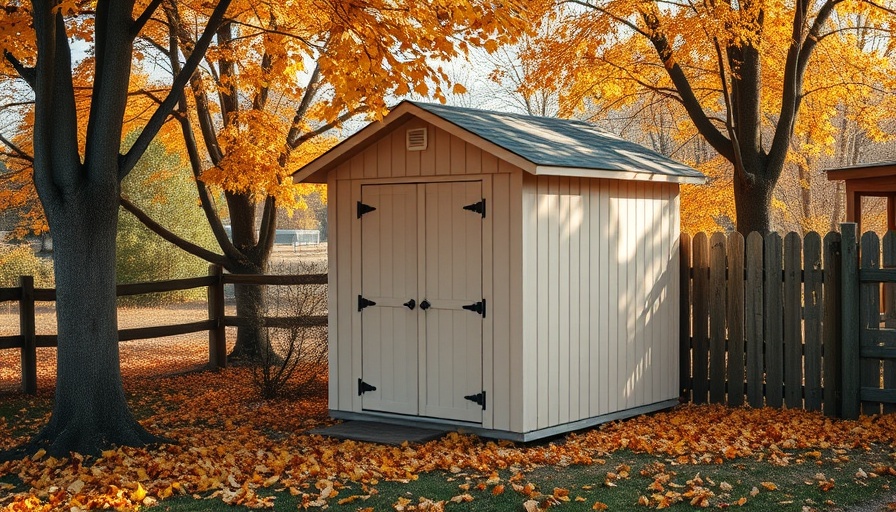
Transform Your Sloped Garden into a Functional Shed Space
Are you dreaming of a shed but discouraged by the slope of your garden? Fear not! A sloped garden can be an excellent canvas for a stable and functional shed with just a bit of planning and ingenuity. By treating the slope as an asset instead of a stumbling block, you can ensure your shed remains level, dry, and functional.
Step 1: Map Out the Slope Like a Pro
Creating a plan starts with understanding your slope. Using two stakes, twine, and a line level, stretch the twine across your desired shed footprint to identify the drop. This initial step helps determine whether a stepped platform or a continuous plane suits your garden best. While mapping, pay attention to rainfall patterns; your base should enhance drainage to avoid water accumulation, making your shed more durable.
Step 2: Choose the Right Foundation Strategy
When working on a sloped surface, the foundation choice is crucial. Here are some options:
- Stepped Sleepers: Create small, level pads using timber or masonry suited for steeper slopes.
- Adjustable Pedestals: Ideal for quick setups that allow slight adjustments.
- Ground Screws: Minimal excavation with strong support—great for temporary sheds.
- Modular Plastic Grids: Excellent for airflow and drainage, perfect for portable constructions.
The Efficient Solution for Quick Setup
If time is of the essence, consider using shed bases that provide a lightweight solution, perfect for creating effective drainage without the mess of pouring concrete. They lay flat quickly and keep moisture at bay, ensuring your shed's longevity in a sloped terrain.
Step 3: Prioritize Drainage
Water can wreak havoc on your shed, so implementing proper drainage is essential. Aim for a crowned sub-base to guide water away, incorporate gravel layers to enhance drainage, and consider installing a French drain if needed to redirect any potential runoff.
Step 4: Building on a Slope Requires Precision
Finally, when constructing your shed, ensure you remove any soft topsoil before compacting the sub-base. Follow the 3-4-5 rule to square your layout accurately, and always double-check levels when laying the platform. Anchoring your shed is critical to protect against wind and ground shifts, ensuring stability for years to come.
With these actionable steps, you'll transform your sloped garden into a sturdy, practical shed space that enhances your outdoor area. Don't let the terrain dictate your dreams; embrace the challenge and build something special!
 Add Row
Add Row  Add
Add 



Write A Comment